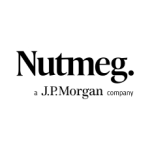How To Buy Procter & Gamble Stock – Best Trading Apps 2021
Looking for a stock trading app to trade Proctor & Gamble that ticks all your boxes?
Share Trading Apps Comparison
| Trading Platforms: | Features:* | Go To Site: |
 | DEGIRO are one of largest and cheapest brokers in Europe. Access to over 50 markets in 30 countries. Low commissions/fees. User-friendly, simple platform. Investing involves risk of loss. | See Deal » |
 | Interactive Investor are the UK's #1 flat fee platform. Over 350,000 customers. Capital at risk. | See Deal » |
 | AJ Bell offers overseas trading in 24 international markets. Capital at risk. | See Deal » |
 | IG Trade & invest with the world's leading online trading provider.** Trade over 17,000 markets with spread bets and CFDs and invest in thousands of global shares & ETFs. Spread bets and CFDs are complex instruments and come with a high risk of losing money rapidly due to leverage. 70% of retail investor accounts lose money when trading spread bets and CFDs with this provider. You should consider whether you understand how spread bets and CFDs work, and whether you can afford to take the high risk of losing your money. Capital at risk. | See Deal » |
 | SAXO Access over 30,000+ stocks across 60+ exchanges worldwide. Ultra competitive pricing. Benefit from extensive charting with 50+ technical indicators, integrated Trade Signals and innovative risk management tools. Investing involves risk of loss. | See Deal » |
 | Hargreaves Lansdown The UK's #1 broker. Price improvement service helps you get the best price for your shares. Capital at risk. | See Deal » |
*Please note that additional fees may be applied by platform/App providers for their services. ** No 1 For CFDs and spread betting, based on revenue excluding FX (published financial statements, October 2021).
What the right stock trading platform is for you will depend on your requirements.
How to buy Procter & Gamble stock
Our view: The next generation of online trading platform means you can get setup & buy Procter & Gamble stock in as little as 5 minutes!
- Select a stock platform – See our top platform picks
- Open your stock account – To do this you will need your bank details and national insurance number
- Fund your account – You will need to fund your a/c with a debit or credit card or bank transfer
- Search for the stock using the Procter & Gamble stock code – Type in the PG stock code into the search box
- Check out the latest info and price for the selected stock – Some platforms offer free research and analysis
- Buy the stock – Nice and easy!
How to select a stock trading platform?
Trading platform services offered vary widely, and so do the costs.
5 things to think about:
1. How do you want to trade ?
There are different ways to trade stocks online:
a. Short term trading – Spread betting & CFDs
Looking to take advantage of short term opportunities in the market?
With derivatives trading you can use products such as CFDs and spread bets to speculate on Procter & Gamble’s stock price increasing or decreasing without having to take direct ownership of the stocks themselves.
CFDs (Contracts For Difference) and spread betting are leveraged products, which means you can gain full exposure to company shares while only putting down a small deposit. While this magnifies possible profits, it does the same for losses.
CFDs & spread bets are popular among short term traders as profits and losses are realised immediately – making it faster to open and close trades. However, this doesn’t mean you can’t use them for longer-term positions too. You’d just need to consider the costs involved in maintaining a position – such as overnight funding – and the bet duration as spread bets do have fixed terms.
They also enable you to buy and sell stocks online without ever owning the underlying asset. This has tax benefits and means you can trade both rising and falling markets (Tax laws are subject to change).
b. Long term trading – Investing in Procter & Gamble shares
Looking to take a longer term position in Procter & Gamble shares?
Share dealing services enables you to invest in company shares with a view to selling them for a profit at a later date. When you buy shares in Procter & Gamble you become a part owner of that Company and gain shareholder rights including any income that is paid as dividends.
Different share dealing services have different charging structures. Some platforms offer commission free share dealing, but most operate on a fixed fee per trade with usually a reduction in this fee if you carry out more than a certain number of trades per month.
With profits you make on share trading capital gains and dividends earned may be subject to tax at your personal rate. Tax can be mitigated if you trade within an ISA or Self Invested Personal Pension account.
2. Do you want to do a lot of trading?
Active investors will want to look for a platform that offers the lowest fees for volume trades.
If you are going to trade Procter & Gamble stock regularly most trading platforms will offer lower trading prices based on volume.
3. How easy to use is this trading platform: what kind of tools and customer service does it offer?
How easy is the platform to use to buy and sell Procter & Gamble shares for new traders/investors?
Platform functionality is becoming the key battleground in persuading traders which platform to go for.
Mobile app features are also key in offering traders alerts and buy/sell signals whilst on the move.
These are often the criteria that count most highly with users, so do some research and read the reviews.
Many investors are prepared to pay a bit more in fees for a platform that offers really useful apps and services.
4. Types of trading accounts for long term trading?
Some trading platforms offer as well as general share trading accounts, ISA accounts and Self Invested Personal Pension Accounts which offer tax free trading benefits (no tax on dividends or capital gains tax on realised profit).
5. Do you want to trade just in shares, funds, or stocks & funds?
If you also interested in investing or trading in funds then this again may determine who you go with.
If you are interested in ETFs, Investment Trusts, Open Ended Investment Companies (OEICs) or Unit Trusts then you will need to check with the platform provider what is available. E.g. Some platforms only offer a limited number of collectives such as OEICs.
Charging structured for funds held on the platform will vary. Over time the impact of such charges can be significant. Check the platform charging structure carefully.
About Procter & Gamble
Procter & Gamble are an international consumer goods manufacturer, specialising primarily in personal health, care and hygiene products.
The company’s products are split into 7 main categories:
- Beauty Care
- Baby Care
- Feminine Care
- Fabric Care
- Home Care
- Personal Health Care
- Grooming
Procter & Gamble’s history dates back to 1837, when William Procter, a soap maker, and James Gamble, a candle maker, set up business in the US together. The pair had emigrated from the UK and Northern Ireland respectively, and by 1858 their company had reached sales of $1 million and employed approximately 80 members of staff.
Throughout the late 1800s, the company significantly developed its brand in the US, grew its facilities and sales figures, and extended its range of products.
By the early 1900s, Procter & Gamble were looking at international expansion, and in 1930 they established a headquarters in Newcastle, UK.
Some significant P&G product developments throughout the second half of the 20th century include Tide, the laundry detergent, Prell shampoo, and Charmin toilet paper. However, one of the most significant products P&G developed during this period was their disposable Pampers diapers which revolutionised the diaper product market.
Throughout the early 2000s, P&G continued to grow by completing a series of acquisitions including Gilette, which included their sub-brands Braun and Oral-B.
In 2014, the company made the decision to significantly streamline its business operations by dropping approximately 100 of its 165 brands. The 65 remaining products had been responsible for roughly 95% of the company’s profits.
Today, Procter & Gamble sell products in over 180 countries worldwide and boast a market capitalisation of over $300bn, making them one of the biggest consumer product companies in the world.
Procter & Gamble Trading News
Procter & Gamble’s resilience to the Covid-19 pandemic has been healthy considering the effects of supply-chain disruptions, economic uncertainty and a significantly adapted working environment for their circa 100,000 employees.
On 19th October this year, P&G announced their end of year results for the fiscal year 2021.
2021 Key Financial Highlights:
- Organic sales grew by over 6%
- Core earnings per share grew by 11%
- Currency neutral earnings per share also grew by 11%
- Adjusted free cash flow productivity was 107%
- Organic sales grew by 8% in the US and 12% in Greater China for the fiscal year
A significant component of P&G’s successful trading year was its E-commerce sales figures, which were up 35% for the year and now represent 14% of the company’s total sales. This is an operational aspect crucial to success in the post-pandemic market.
Each of their product categories saw growth in sales figures, or were at least in line with the previous fiscal year.
And looking at the company’s figures for the 18 months preceding the Covid-19 outbreak gives additional perspective to the strength of their operations post-pandemic. In the 18 months to December 2019, organic sales grew an average of 5% which is compared to 6% in the 2021 financial year.
Along with long term growth prospects, Procter & Gamble’s shareholder dividend history is significant and serves as an additional selling point for investors.
As of April 2021, the company has consecutively increased its annual dividend for 65 years consecutively – an impressive track record.
In fact, their April 2021 dividend marked the largest dividend increase for the company’s shareholders in over a decade, demonstrating their strength coming out of the global pandemic.
IMPORTANT:
No news, feature article or comment should be seen as a personal recommendation to invest. Prior to making any decision to invest, you should ensure that you are familiar with the risks associated with a particular plan. If you are at all unsure of the suitability of a particular product, both in respect of its objectives and its risk profile, you should seek independent financial advice.
The value of shares, ETFs and ETCs bought through a share dealing account, a stocks and shares ISA or a SIPP can fall as well as rise, which could mean getting back less than you originally put in. Past performance is no guarantee of future results.
Spread bets and CFDs are complex instruments and come with a high risk of losing money rapidly due to leverage. Between 67%-70% of retail investor accounts lose money when trading CFDs. You should consider whether you understand how spread bets and CFDs work, and whether you can afford to take the high risk of losing your money. Professional clients can lose more than they deposit. All trading involves risk.
Tax treatment of ISAs depends on your individual circumstances and is based on current law which may be subject to change in the future. ISA transfer charges may apply, please check with your provider.
Tags





